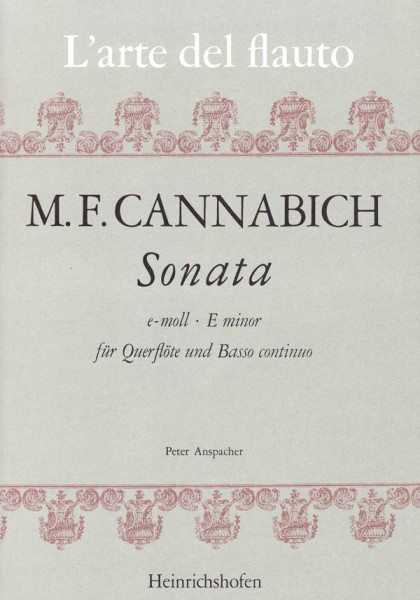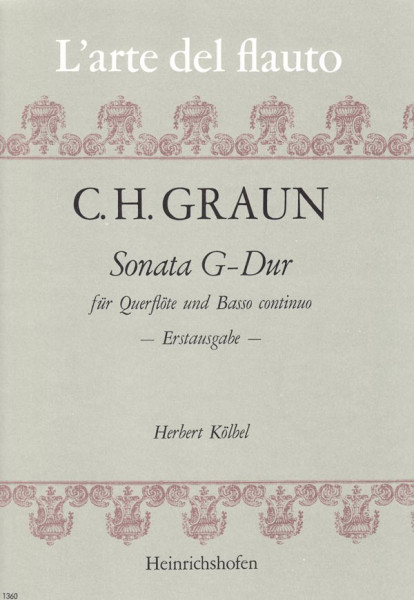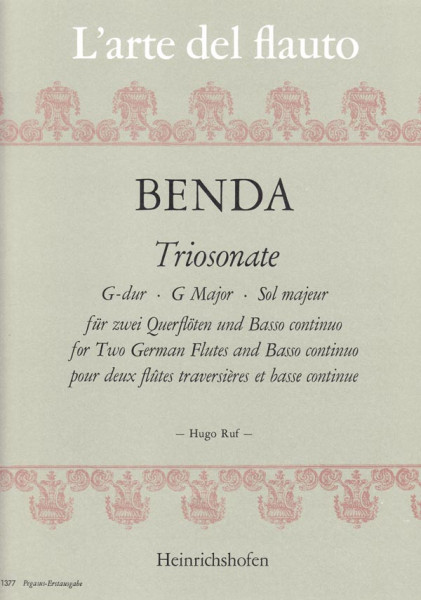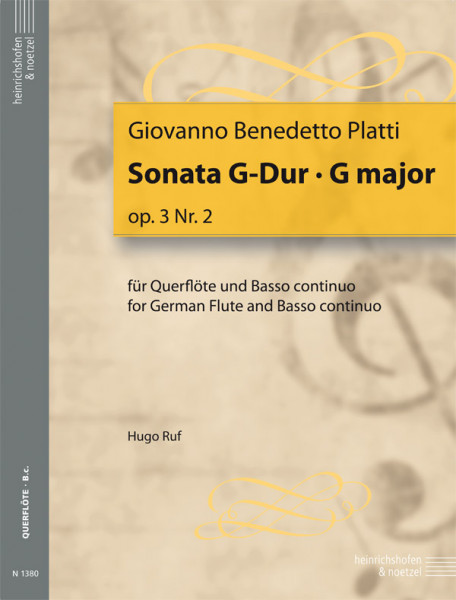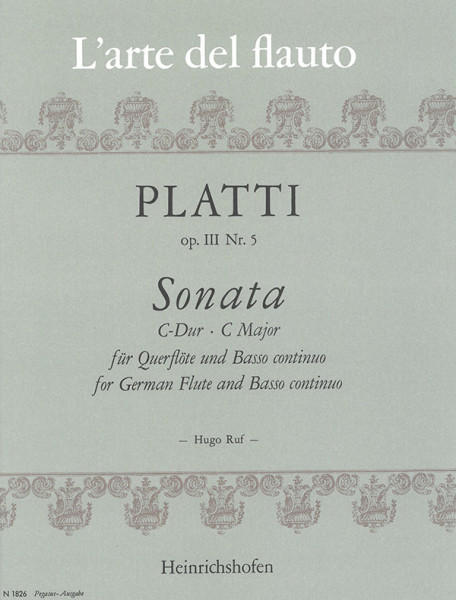No results were found for the filter!
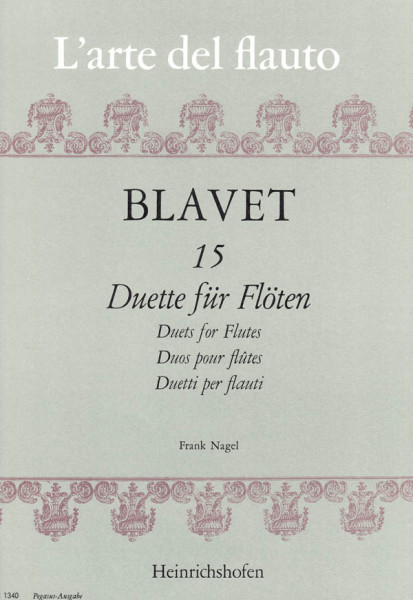
Michel Blavet
15 duets 2 flutes
Michel Blavet (1700-1768) was a French composer and flute virtuoso. He was a remarkable artist who not only specialised in the bassoon and flute, but was also known for his exceptional intonation, even in difficult keys. Voltaire admired the beautiful sound of his playing and Marpurg described him as a virtuoso of the highest quality who maintained modesty despite his great popularity. He was characterised by the fact that he held the flute with his left hand, which set him apart from most flutists of his time. His works, written mainly for the transverse flute, show both the 'Italian and French styles' and are written in simple keys to make them accessible to amateurs. His surviving works include a concerto and 3 sonata books (1740).
Mehr €12.80 *
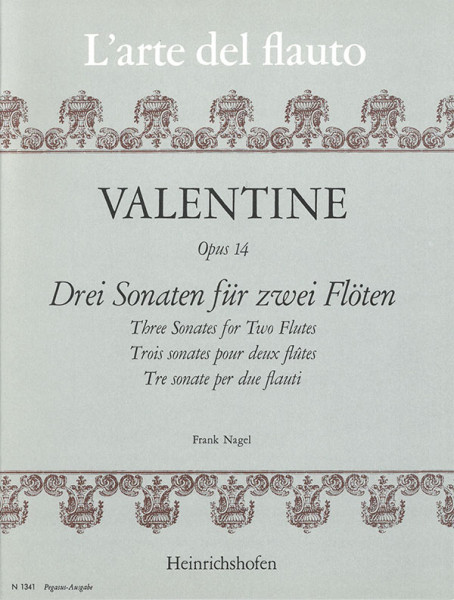
Robert Valentine
3 sonatas op.14 2 flutes
Robert Valentin (ca. 1678 - 1747), also known as Roberto Valentini or Roberto Valentino, was a well-known English composer, recorder player, oboist and violinist. He moved to Rome and became an Italian citizen. Valentino is best known for his numerous recorder compositions. He was considered a highly skilled player of this instrument. His instrumental compositions include a series of sonata collections and trio sonatas as well as concerto grosso. At first, his style was strongly orientated towards that of Arcangelo Corelli. Over time, however, he increasingly turned towards the galant style, which is reflected in his later sonatas published in Northern Europe. Content: I. Sonata - Andante - Allegro - Largo - Allegro II. Sonata - Largo - Allegro - Adagio - Allegro III. Sonata - Largo - Allegro - Andante - Minuet
Mehr €11.90 *

Michel Blavet
Sonata A major Flute and basso contiuo
Michel Blavet (1700-1768) was a French composer and flute virtuoso. He was a remarkable artist who not only specialised in the bassoon and flute, but was also known for his exceptional intonation, even in difficult keys. Voltaire admired the beautiful sound of his playing and Marpurg described him as a virtuoso of the highest quality who maintained modesty despite his great popularity. He was characterised by the fact that he held the flute with his left hand, which set him apart from most flutists of his time. His works, written mainly for the transverse flute, show both the 'Italian and French styles' and are written in simple keys to make them accessible to amateurs. His surviving works include a concerto and 3 sonata books (1740).
Mehr €15.00 *

Giuseppe Maria...
Sonata C major Livre I, 4 Flute and basso continuo
Giuseppe Maria Gioacchino Cambini (1746-1825) was an Italian composer and violinist who was very successful in Paris at the end of the 18th century. Only fragments of his life and biography are known. Giuseppe Maria Gioacchino Cambini's numerous flute compositions include two collections of six sonatas each for flute and basso continuo. The first (1er Livre de Sonate) was published by Mussard (Paris) in 1782, the second (2e Livre des Sonates de Flûte) followed around 1787 by Sieber. The sonata in C major presented here is the fourth of the first volume, which the Ecole Nationale de Musique et d'Art Dramatique in Dijon has kindly made available. Content: - Allegro - Adagio - Tempo di Minuetto (6 variations)
Mehr €17.50 *
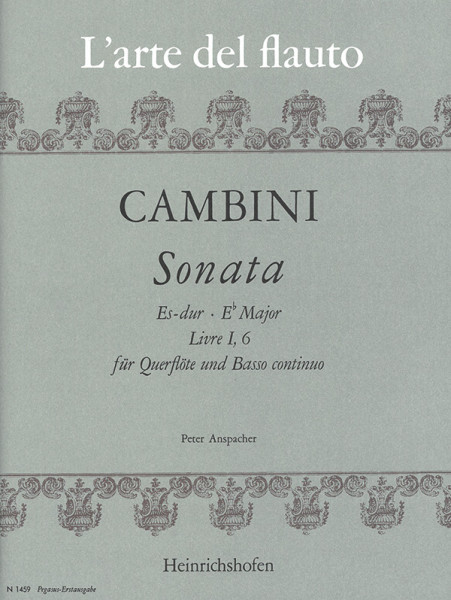
Giuseppe Maria...
Sonata E flat major | Livre I, 6 Flute and basso continuo
Giuseppe Maria Gioacchino Cambini (1746-1825) was an Italian composer and violinist who was very successful in Paris at the end of the 18th century. Only fragments of his life and biography are known. Giuseppe Maria Gioacchino Cambini's numerous flute compositions include two collections of six sonatas each for flute and basso continuo. The first (1er Livre de Sonate) was published by Mussard (Paris) in 1782, the second (2e Livre des Sonates de Flûte) followed around 1787 by Sieber. The Sonata in E flat major presented here concludes the first volume, which the Ecole Nationale de Musique et d'Art Dramatique in Dijon kindly made available to me. The work stands out from the other five sonatas not only because of the progressive melody of the outer movements, but also because in the final movement (Rondo) the bass is left to lead the melody for eight bars from bar 73 and later (from bar 97) for a further sixteen bars, while the flute recedes into the role of the accompanying instrument. Content: - Allegro expressivo - Adagio - Rondo | Allegretto
Mehr €17.50 *
Viewed


